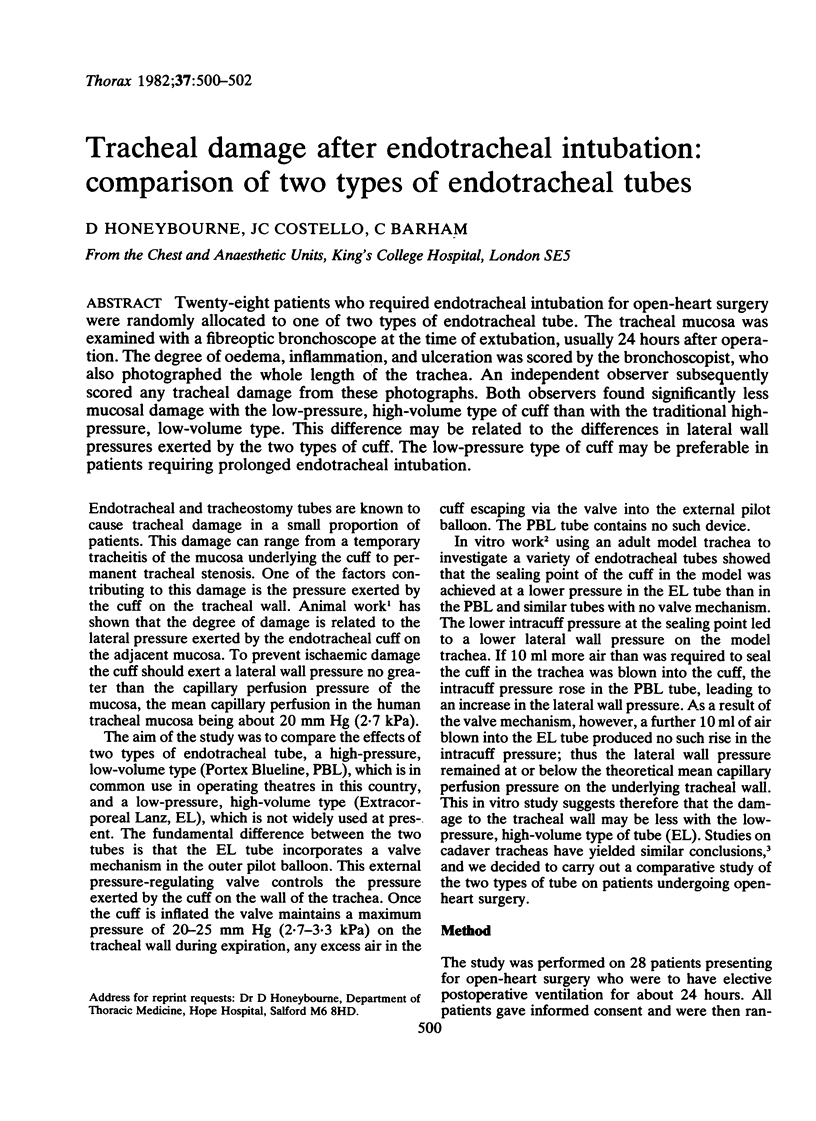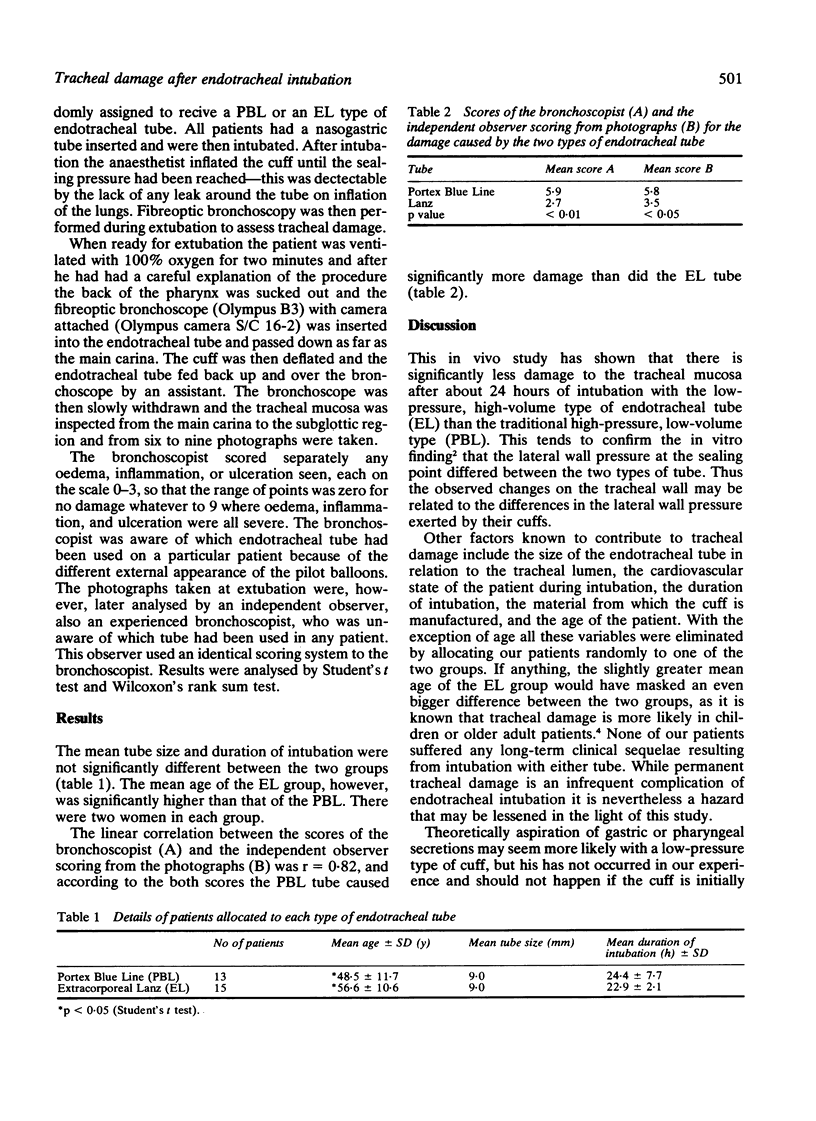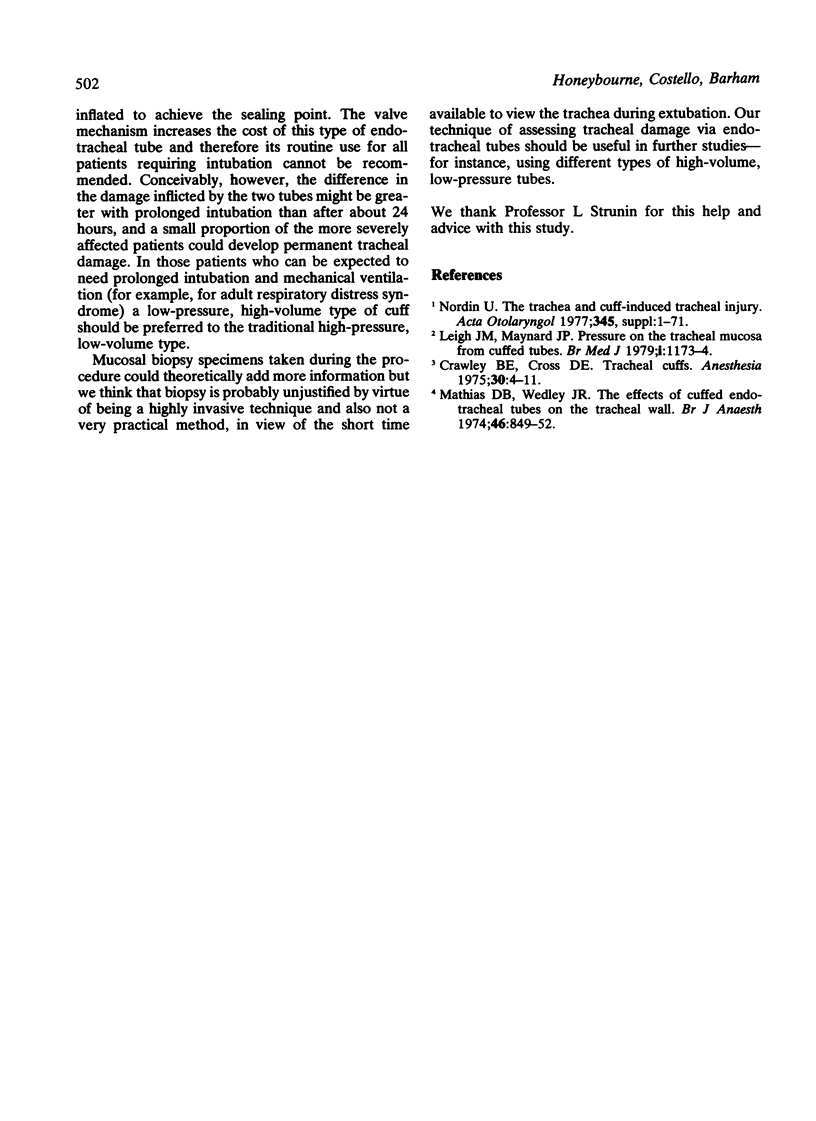Abstract
Twenty-eight patients who required endotracheal intubation for open-heart surgery were randomly allocated to one of two types of endotracheal tube. The tracheal mucosa was examined with a fibreoptic bronchoscope at the time of extubation, usually 24 hours after operation. The degree of oedema, inflammation, and ulceration was scored by the bronchoscopist, who also photographed the whole length of the trachea. An independent observer subsequently scored any tracheal damage from these photographs. Both observers found significantly less mucosal damage with the low-pressure, high-volume type of cuff than with the traditional high-pressure, low-volume type. This difference may be related to the differences in lateral wall pressures exerted by the two types of cuff. The low-pressure type of cuff may be preferable in patients requiring prolonged endotracheal intubation.
Full text
PDF


Selected References
These references are in PubMed. This may not be the complete list of references from this article.
- Crawley B. E., Cross D. E. Tracheal cuffs. A review and dynamic pressure study. Anaesthesia. 1975 Jan;30(1):4–11. doi: 10.1111/j.1365-2044.1975.tb00787.x. [DOI] [PubMed] [Google Scholar]
- Leigh J. M., Maynard J. P. Pressure on the tracheal mucosa from cuffed tubes. Br Med J. 1979 May 5;1(6172):1173–1174. doi: 10.1136/bmj.1.6172.1173. [DOI] [PMC free article] [PubMed] [Google Scholar]
- Mathias D. B., Wedley J. R. The effects of cuffed endotracheal tubes on the tracheal wall. Br J Anaesth. 1974 Nov;46(11):849–852. doi: 10.1093/bja/46.11.849. [DOI] [PubMed] [Google Scholar]
- Nordin U. The trachea and cuff-induced tracheal injury. An experimental study on causative factors and prevention. Acta Otolaryngol Suppl. 1977;345:1–71. [PubMed] [Google Scholar]


